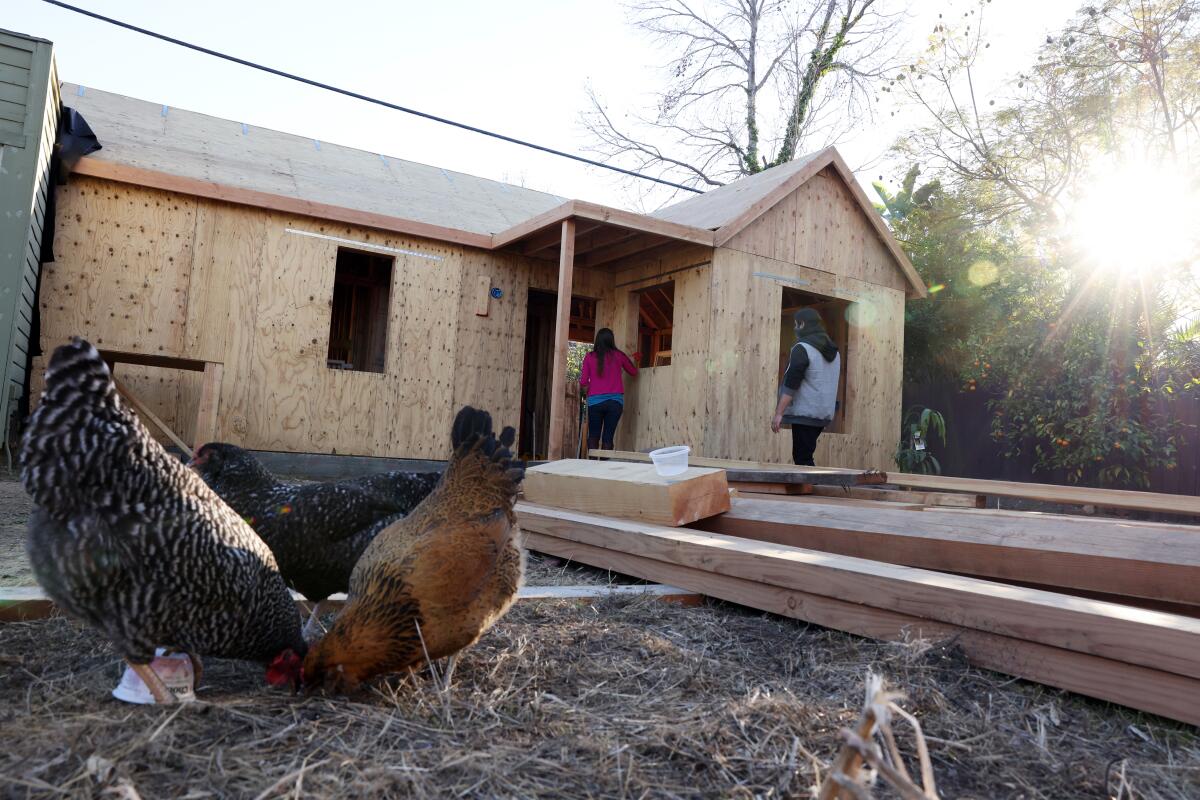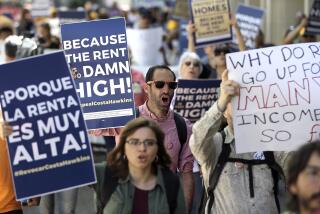Some California cities try to blunt new duplex law with restrictions on new developments

- Share via
With California on the verge of allowing multi-unit housing in neighborhoods previously reserved for single-family homes, some cities are rushing to pass restrictions on the new developments.
Senate Bill 9, which takes effect Jan. 1, requires communities across California to allow duplexes, and in some cases four units, in most single-family home neighborhoods.
The law’s passage this summer came after years of debate over how to address a shortage of available homes at root of the state’s housing affordability problems.
But opponents to the new law contend that it will overrun single-family home neighborhoods with development that runs counter to the character of their communities and will mean excessive traffic. They also argue that the housing allowed won’t be affordable. Cities across the state, from Los Altos Hills and Cupertino in the Bay Area to Pasadena and Redondo Beach in Los Angeles County, are considering measures that would blunt the effects of the new law.
Among other restrictions, local plans are aiming to limit the size and height of new development, mandate parking spots and require that such housing be rented only to those making moderate or low incomes.
“We want to ensure that we put in the few constraints that are allowed,” said Redondo Beach Mayor Bill Brand, whose city is considering capping the number of homes allowed amid other provisions. “It’s all happening very quickly and haphazardly as people are trying to figure out what they can and can’t do.”
It’s hard to overstate how big of a change the new law could have in California. Nearly two-thirds of all the residences in the state are single-family homes. And as much as three-quarters of the developable land in the state is now zoned only for single-family housing, according to UC Berkeley research. Additionally, the “California Dream” has long been mythologized as living in a suburban single-family home with a backyard and barbecue.
When Gov. Gavin Newsom signed the law in September, the state became the second in the nation to eliminate single-family-home-only zoning in most areas, following Oregon, which did it in 2019.
In other ways, however, SB 9 might not have a significant impact. The law doesn’t prohibit the construction of new single-family homes. It only allows property owners to build duplexes — or fourplexes — on their land if they want to. Also, other zoning changes in recent years have already made it a lot easier for property owners to build smaller secondary homes — known as granny flats, casitas or accessory dwelling units — on their single-family-home-zoned parcels.
Indeed, UC Berkeley researchers found that it would make financial sense for property owners of only about 5% of the state’s 7.5 million single-family lots to add more homes on their property pursuant to the new law.
Some proponents characterize SB 9 as a modest effort to spur growth in areas that have long been off limits, and contend that many of the restrictions planned by cities are actually attempts to keep people from building at all.
“It’s unfortunate that some of these cities are trying to obstruct state law instead of embracing new housing, but that’s the world we’re living in,” said state Sen. Scott Wiener (D-San Francisco), a supporter of the law and author of many of the most aggressive housing production bills in recent years.
Wiener said that he expects state housing officials, who have recently created a new department to investigate local compliance with state laws, will examine attempts to limit the effects of SB 9 to see if they violate the law.
But some local officials say that their measures represent legitimate efforts to maintain key development priorities. Under a proposed regulation in the city of Pasadena, for instance, those building under SB 9 may have to plant a “minimum of two mature trees on-site” from the city’s list of native and protected species, a provision that is likely to add costs to the project.
David Reyes, Pasadena’s director of planning and community development, said the city’s proposal is designed to protect Pasadena’s tree canopy and that the requirement could be waived if a builder showed the rule would make a duplex or fourplex unfeasible.
“It’s going to happen,” said Reyes of SB 9. “We’re not going to develop any regulations that would be contrary to the intent or the word of the law.”
“If we wanted to stop this,” Reyes continued, “we could have said: ‘Make any parking subterranean.’”
In addition to Redondo Beach and Pasadena, Temple City and Hermosa Beach are among the Southern California cities discussing regulations that would limit some development under SB 9. Brand, who is promoting a proposed 2022 state constitutional amendment restraining the state’s ability to override local development rules, believes that many cities may pass regulations — with some testing the limit of what’s allowed.
“Ultimately it’s going to be something that’s going to be determined by a court of law,” he said.
Opposition to the law also has been vociferous among some in South L.A. neighborhoods who fear the measure will fuel ongoing gentrification and displacement of longtime Black residents. In an effort to quell concerns, a late change made to the law prior to its passage said that those wanting to split their lot to build more housing must intend to live on the property for at least three years afterward.
More to Read
Sign up for Essential California
The most important California stories and recommendations in your inbox every morning.
You may occasionally receive promotional content from the Los Angeles Times.







